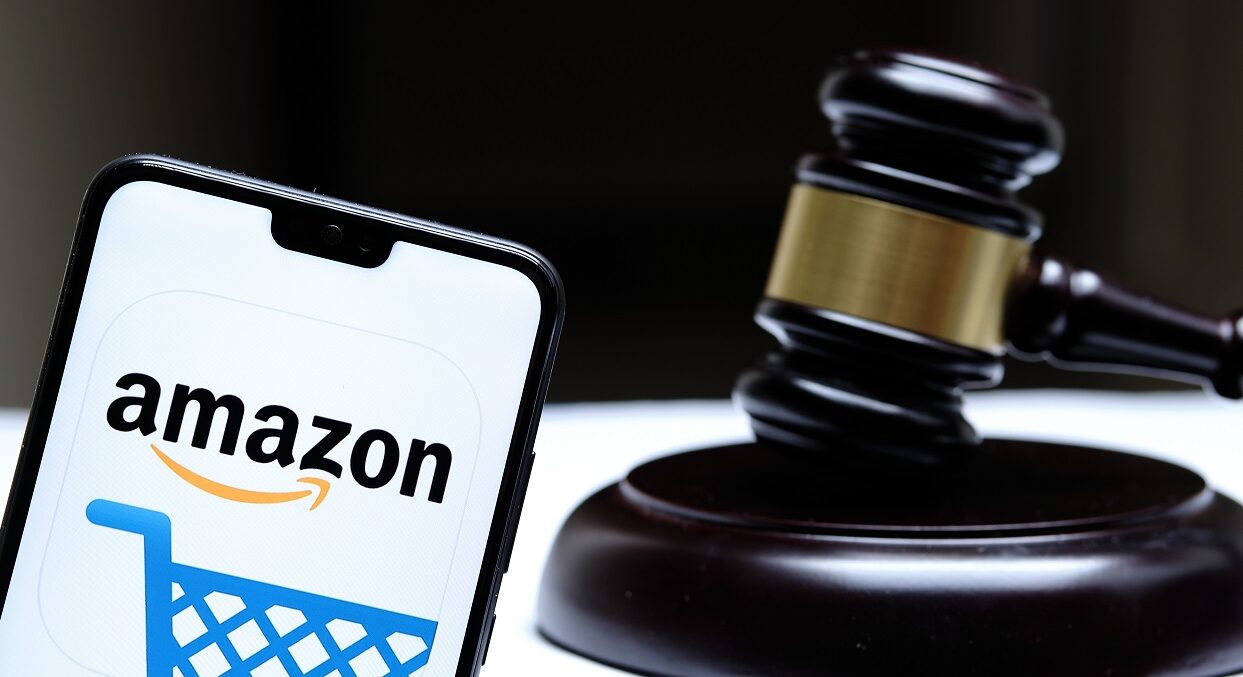
“Seldom in the history of U.S. antitrust law has one case had the potential to do so much good [HARM] for so many people.” – Federal Trade Commission (FTC) Bureau of Competition Deputy Director John Newman, quoted in a Sept. 26 press release announcing the FTC’s lawsuit against Amazon (correction IN ALL CAPS is mine)
Introduction
The FTC—joined (unfortunately) by 17 state attorneys general—on Sept. 26 filed its much-anticipated antitrust complaint against Amazon in the U.S. District Court for the Western District of Washington. Lacking all sense of irony, Deputy Director Newman, quoted above, bragged about the case’s potential to do greater good than almost all previous antitrust lawsuits.
A quick perusal of the FTC’s press release announcing the suit reveals the basic claims the FTC will be making in court. While full details are set forth in the commission’s formal complaint, the press release provides one sufficient reason to believe that this high-profile antitrust complaint is baseless. A few initial comments on this travesty of a lawsuit follow.
In a recent Truth on the Market commentary, Lazar Radic and Geoffrey Manne provided an outstanding succinct critique of key elements of the FTC’s (then) expected Amazon case. I draw upon that commentary in the discussion that follows.
Discussion
The press release begins by setting forth the crux of the complaint:
The FTC and its state partners say Amazon’s actions allow it to stop rivals and sellers from lowering prices, degrade quality for shoppers, overcharge sellers, stifle innovation, and prevent rivals from fairly competing against Amazon. . . . By stifling competition on price, product selection, quality, and by preventing its current or future rivals from attracting a critical mass of shoppers and sellers, Amazon ensures that no current or future rival can threaten its dominance. Amazon’s far-reaching schemes impact hundreds of billions of dollars in retail sales every year, touch hundreds of thousands of products sold by businesses big and small and affect over a hundred million shoppers.
Various specific assertions then follow this bold pronouncement.
Anti-discounting measures that punish sellers and deter other online retailers from offering prices lower than Amazon, keeping prices higher for products across the internet.
This apparently refers to “price parity clauses,” or PPCs, by which Amazon requires that retailers not charge a higher price on Amazon than they do on other platforms. But as Radic and Manne have explained, PPCs often promote competition by benefiting consumers (who can avoid wasting time searching among sites), and by incentivizing e-commerce sites to invest in good search functions and friendly consumer interfaces, rather than sacrificing both in competing on price. These agreements are not price-fixing deals, since retailers are perfectly free to undercut prices charged by Amazon for similar brands. In short, banning PPCs would undercut Amazon’s incentive to invest in its own platform, to the detriment of sellers and consumers.
Conditioning sellers’ ability to obtain “Prime” eligibility for their products—a virtual necessity for doing business on Amazon—on sellers using Amazon’s costly fulfillment service, which has made it substantially more expensive for sellers on Amazon to also offer their products on other platforms.
Amazon’s fulfillment service—under which Amazon picks, packs, and ships third-party orders—is very popular and beneficial to consumers. If Amazon decided to no longer offer this service to third parties, it would harm many businesses and consumers, who no longer would patronize product lines not offered through fulfillment by Amazon. As Radic and Manne point out, because Amazon’s own products account for 40% of total revenue, this denial of fulfillment by Amazon (and U.S. antitrust law does not require that one deal with one’s competitors) is a real possibility. Other scenarios are possible, as well, but interfering with Amazon’s ability to jointly promote fulfillment by Amazon and Prime services—both highly popular with consumers—is likely to entail a loss in consumer and producer welfare.
Degrading the customer experience by replacing relevant, organic search results with paid advertisements—and deliberately increasing junk ads that worsen search quality and frustrate both shoppers seeking products and sellers who are promised a return on their advertising purchase.
This is, in effect, an assertion that the FTC is authorized to micromanage nondeceptive advertising decisions by a platform that it finds inappropriate, simply because the advertisements somehow selected lower “search quality.” There is no basis in antitrust law for such a claim. Truthful advertising (whether “junk” or not) is a form of commercial speech that enjoys First Amendment protection (see the U.S. Supreme Court’s 1980 Central Hudson decision, here and here), and any attempt by an antitrust enforcer to characterize such speech as raising antitrust issues is highly problematic, if not absurd on its face.
Biasing Amazon’s search results to preference Amazon’s own products over ones that Amazon knows are of better quality.
Self-preferencing by platforms is not unusual. Supermarkets, for example, may grant preferred placements to their store brands (or to third-party brands that pay for the privilege), but this is part of accepted competition in the marketplace.
More generally, as Geoff Manne has explained:
Self-preferencing is a common business practice throughout the economy. Supermarkets and other retailers, for example, regularly sell — and preference — their own products alongside those of third-party businesses. Like offline retailers, platforms often prioritize their own products through, e.g., preferential product placement, by improving their products based on information gleaned from third-party sales, or by conditioning third-party use of their platform on the consumption of their services.
Platforms’ incentives are to maximize the value of their whole ecosystem, which includes both the core platform and the services they attach to it.
Platforms that grant preference to their own products frequently end up increasing the value of the market overall by growing the total share of users of a particular product, and those that give preference to inferior products end up hurting the attractiveness to users of the platform, weakening themselves to competition from rivals.
In short, an antitrust court should give short shrift to FTC claims that self-preferencing by Amazon is anticompetitive (pun intended). (See also here for more on Amazon’s self-preferencing.)
Charging costly fees on the hundreds of thousands of sellers that currently have no choice but to rely on Amazon to stay in business. These fees range from a monthly fee sellers must pay for each item sold, to advertising fees that have become virtually necessary for sellers to do business. Combined, all of these fees force many sellers to pay close to 50% of their total revenues to Amazon. These fees harm not only sellers but also shoppers, who pay increased prices for thousands of products sold on or off Amazon.
This FTC assertion likewise is totally lacking as a theory of antitrust harm. Like any other business, Amazon has every right to charge what it deems appropriate to third parties that desire access to its platform. Amazon is not subject to statutory price regulation and, like all other unregulated firms, has every right to set the prices it deems appropriate for access to its platform. As Justice Antonin Scalia stressed in Verizon v. Trinko (2004), “[t]he mere possession of monopoly power, and the concomitant charging of monopoly prices, is not only not unlawful; it is an important element of the free-market system.”
But what if Amazon were an “essential facility”? As Manne and Radic point out, the “essential-facility doctrine” has fallen out of favor and likely would not be accepted by a court. And Tad Lipsky explains that this doctrine “is no more useful as a response to concerns about access to digital platforms than to the other situations that have led to the [Supreme] Court’s profound doubts regarding” the doctrine.
But in any event, Amazon is not an “essential facility,” in that access to it is not absolutely essential for third parties to be able to compete. As Manne and Kristian Stout have argued:
Granting retailers access to Amazon’s platform on artificially favorable terms is no more justifiable than granting them access to a supermarket end cap, or a particular unit at a shopping mall. There is, in other words, no business or economic justification for granting retailers in the time-tested and massive retail market an entitlement to use a particular mode of marketing and distribution just because they find it more convenient.
Furthermore, even if Amazon were deemed to be an essential facility, Radic and Manne emphasize that it could just grant all parties equivalent but inferior access to amazon.com. For example, delivery requirements and other aspects of Prime could be degraded, to the detriment of consumers. As Radic and Manne note, “[o]ver time, this would make amazon.com worse—less trusted, less popular with consumers, and less beneficial to the very sellers that [FTC Chair Lina] Khan wants to empower.”
As such, the FTC’s concern about fees charged to third parties lacks antitrust substance.
Big Picture Observations: Looking Beyond the FTC-States’ Complaint
The joint FTC-states complaint against Amazon does, of course, merit close reading. The FTC may well characterize it as including sufficient specific acts by Amazon to justify characterizing the firm as an “evil monopolist,” out to maintain its dominant position (or, more accurately put, to maintain its position as the most effective competitor in the marketplace).
But actual effects in the marketplace are the key to evaluating Amazon’s conduct. Amazon does not require any firm to join or remain part of its network. Moreover, smaller producers and retailers have a broad choice of alternative online platforms to engage in commerce.
The fact that so many firms seek to affiliate with Amazon’s platform tells you that they perceive economic benefits in doing so. And that is not surprising, because consumers love Amazon, both here and abroad (see, for example, here, here, here, here, and here).
A recent survey of Amazon users by Adlucent found that: (1) “consumers pick Amazon because they have a better product selection”; (2) “people pay for Prime memberships to get free shipping”; and (3) “consumers buy electronics, home goods, and books on Amazon.”
Adlucent focused on the consumer benefits generated by Amazon’s model as something retailers should emulate in order to compete effectively: “retailers who want to compete with Amazon need to focus on offering a wide product selection, affordable and fast shipping, and excellent customer service.”
In sum, Amazon’s success derives from an innovative system that consumers enjoy patronizing. This is a manifestation of procompetitive consumer-welfare-enhancing innovation, not exclusionary anticompetitive harm. The FTC’s plans to dramatically change Amazon’s business practices are therefore nothing less than an attack on a vibrant competitive process.
The FTC is once again demonstrating a bureaucratic pretense of knowledge in believing that government can tinker with and thereby improve a highly innovative business system that has showered enormous benefits on both consumers and producers (as have other platforms, see here). This is a particularly odious manifestation of the nirvana fallacy (see Harold Demsetz’s seminal article on this topic), for the FTC is not merely purporting to “perfect” a clearly good institution (the Amazon business system, which benefits consumers), but is rather mischaracterizing it as competitively harmful.
The American law of monopolization does not condemn innovative conduct that plainly has benefited consumers. As the D.C. Circuit stated in its landmark en banc 2001 Microsoft decision:
[In order] to be considered as exclusionary, a monopolist’s act must have an “anticompetitive effect.” That is, it must harm the competitive process and thereby harm consumers. In contrast, harm to one or more competitors will not suffice. [Emphasis in the original.]
Moreover, the FTC should recall that, as the Supreme Court emphasized in Reiter v. Sonotone (1979), antitrust is “a consumer welfare prescription.” When substantial consumer-welfare enhancement can be demonstrated, as in the case of the Amazon business model, it is folly for government to intervene in the belief that government intervention will somehow “make things better.” Just as a doctor should not prescribe medicines having major side effects for a healthy individual, the FTC should not sue to upend a company business structure that has generated enormous social benefits, accruing to consumers and to other businesses.
Finally, the FTC’s Amazon complaint sends a terrible signal to other businesses, who over time seek to continuously improve their business model for the benefits of consumers, following Amazon’s example (see here). It is no coincidence that Amazon and the other great digital platforms of the 21st century, which have so benefited consumers around the world, are “American made.” The FTC’s complaint implicitly suggests that a huge platform should not try to be “too successful,” a suggestion that may lead to reduced innovation and diminished future social welfare. The complaint also reassures foreign competition agencies that attacking successful American platforms is just fine. In a time of robust international competition, this is sheer stupidity (doubtless the Chinese government is taking note).
Conclusion
When Pandora opened her box, evils flew out, but hope remained. Let us hope that the federal court assigned this case will quickly and authoritatively dismiss the FTC’s complaint, consigning it to the dustbin of bad antitrust ideas where it richly belongs.




